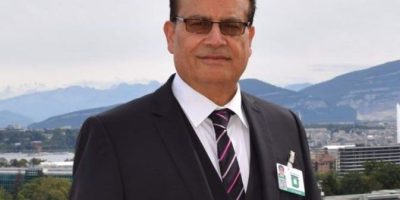Terrorism in Pakistan, a gift of proxy wars: myth and reality

By Adnan Yousaf
It is believed that terrorism in Pakistan dates back to the cold war era when Pakistan chose to be an ally of western bloc against the Soviet bloc which were representing two completely different philosophies concerning class relations, individualism, governance, and the nature of power. This ideological confrontation directly shaped and characterized the forms that terrorism would take during the Cold War.
Before tracing out the roots of terrorism in Pakistan in the cold war era, it would be worthwhile to briefly review the macro dynamics of terrorism in Pakistan and the internal and external factors that are responsible for the evolution of terrorism in the country in its present shape.
When Pakistan got independence from British in 1947, it had diverse population in terms of ethnicity and religious sects. The major ethnic groups included Bengali, Punjabi, Sindhi, Baluchi, and Pathan while the religious sects comprised Shias and Sunnis, further subdivided into many groups based on their theological differences. This diversity later on resulted into the secession of East Pakistan in 1971, and the insurgency in Baluchistan during 1970-1974.
The beginning of terrorism in Pakistan dates back to 1979 when General Zia-ul-Haque came to power after toppling Zulfiqar Ali Bhutto, the then elected Prime Minister of Pakistan. General Zia executed Bhutto in 1979 which led to the formation of a militant faction Al-Zulfikar. This group committed many terroristic acts while struggling for the revival of Bhutto’s founded Pakistan Peoples Party (PPP) in Sindh. Zia fearing the renaissance of PPP and in order to break Bhutto’s influence in Sindh helped form Muhajir Qaumi Movement (MQM). The alliance of Zia and MQM strengthened this language-based party MQM and hence stood largely responsible for 90% of terrorism in Karachi and Hyderabad.
The second factor responsible for the evolution of terrorism in Pakistan is a combination of both internal and external since it has a direct link with the 1979 Iranian Revolution which established its influence in the Shia community of Pakistan. As a result Shias demanded exemption from the Zakat & Usher Ordinance and enforcement of Shia jurisprudence in their personal matters. General Zia, as a counter-step helped Sipah-e-Sahaba Pakistan (SSP), an anti-Shia Deobandi religious organization. The SSP, getting funds from both Iraq and Saudi Arabia, was further supported by the Iraq-Iran war of 1980’s, as the parties to the war made Pakistan a proxy theater. The SSP, later on, gave birth to further militant groups, including Lashkar-e-Jhangvi (LeJ). Studies show that almost 30% of terrorism in Pakistan is traced back to the SSP or its subgroups, and the Shia groups like Sipah-e-Muhammad (SMP). Therefore, language and sectarian motivations explain about 70% of terrorism in Pakistan.
The Soviet Invasion of Afghanistan in 1979 prompted the U.S. and Saudi Arabia to invest nearly billion dollars in the region to organize, train, and arm fighters against the United State of Soviet Russia (USSR). American and Saudi Arabia, by pumping money in the region, helped the transportation and accommodation of thousands of Muslims Fighters in Afghanistan and Pakistan. Money of both countries pushed the Mullahs in both Pakistan and Afghanistan to established Madrassas as sanctuaries of jihad culture, a culture which symbolized carrying a Kalashnikov as an honor in the society. This Jihad culture coupled with massive amount of U.S and Saudi Arabia funds strengthened General Zia against the PPP and Shias.
Fourthly, in 1989, after the end of Afghan Jihad against Soviets, America left the Pak-Afghan region with mobilized and trained mujahedeen (Taliban), 80, 000 in Pakistan alone, Inter-Services Intelligence (ISI) came into action. It tried to divert mujahedeen to create ‘strategic depth’ in Afghanistan and to support the struggle in the Indian-held Kashmir. Taliban came to power in Afghanistan, and they started to give space to the Arab mujahedeen like Osama Bin Laden. Since the Taliban has established a government in Afghanistan, they started to challenge U.S as their confidence was boosted after defeating USSR in Afghanistan; secondly, they had grievances against the U.S who had deserted and ignored the Taliban after the Soviet withdrawal from Afghanistan. Therefore, Taliban and Arab mujahedeen jointly challenged U.S in the form of 9/11 as the latter had their own grievances owing to the presence of the U.S army in Saudi Arabia. 9/11 brought the U.S. again to Afghanistan but this time around as an enemy of the mujahedeen.
Fifth, Pakistan decided to assist the U.S. when it invaded Afghanistan. As a result of this, Arab mujahedeen and the Taliban became rivals of Pakistan and current terrorism in Pakistan is a direct result of its confrontation with these mujahedeen. The U.S. drone attacks inside Pakistan further added fuel to the fire. Once the Northern Alliance with the help of U.S. formed their government in Afghanistan, India was allowed to establish four consulates and one embassy in a small country like Afghanistan. Government of Pakistan alleged India to be sponsoring terrorism in Baluchistan on the basis of racism. The weapons used against the Pakistan army in Swat operation were coming from Afghanistan and were of U.S. origin which the U.S explained as those that were stolen from the arms supplied to Afghan forces. In fact India was playing its role of an arch rival of Pakistan backed by the U.S which was concerned more about China building Gwadar port in Baluchistan which according to their assessment would undermine U.S. and regional security.
Though Pak-U.S strategic partnership is in our national interest, Pakistan is standing in the middle of a desert where there is neither an escape nor the option to go back in time to revert the situation.
The writer is senior sub editor of Centreline and Diplomatic News Agency (DNA).
Related News

The Enemy Within — and the American Habit of Fixing It
Qamar Bashir War Secretary Pete Hegseth’s recent address to defense-industry leaders began not with warningsRead More

A Defining Year for Pakistan
by Muhammad Mohsin Iqbal As the final days of 2025 quietly recede and the firstRead More


Comments are Closed